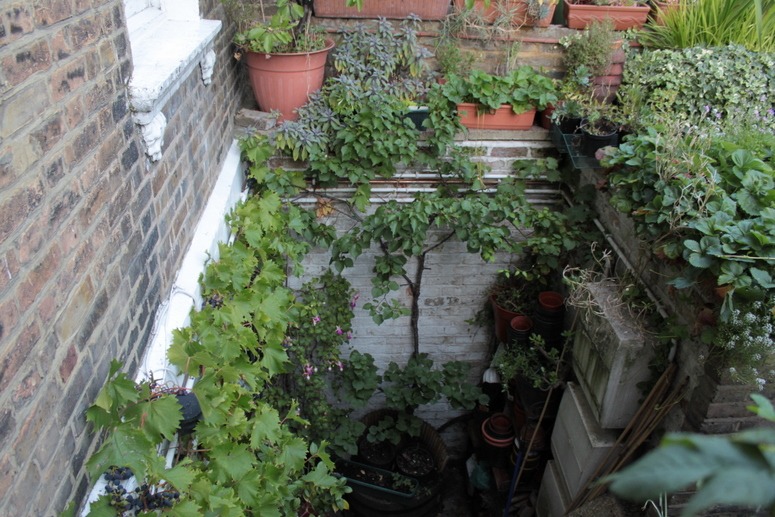Cities can, should and will, I believe, become much more productive of food. A friend whose paved ‘garden’ measures about 20 sq meters is self-sufficnent herbs and in summer fruits. He has 16 fruit trees, all grown in pots, and produces strawberries and other fruits with a flavour far superior to supermarket food. He does not have to worry about chemical sprays. He contributes to the balance of payments. NO energy is required to transport the produce. His plants take in carbon dioxide and give off oxygen. The vitamens do not have time to decay in storage. There is no need for a refrigerator or deep freeze to store the food. Tending the plants is good exercise. He provides ‘visual policing’ for the community while doing the work.
Why don’t more people grow their own food? Because most cities are not planned for urban agriculture, unless they are in Cuba.


Kitchen gardens in the New World it seems are associated with liberty, fraternity, equality and the American way! Perhaps even a distrust of the Old World Establishment?
[ http://exhibits.mannlib.cornell.edu/kitchengardens/intro.htm ]
In Europe kitchen gardens are more typically associated with monasteries and villas.
Interesting point for research! – but I doubt if much difference between the two countries would be found, except perhaps that aristocratic Englishmen were more interested in fruit than in vegetables. I have been looking at the Kip and Knyff engravings recently. Vegetable gardens are fully integrated with the aesthetic layouts but what they appear to show is the crops grown were grain, fruit and rows of clumpy vegetables which, presumably, were beans, peas and cabbages. The potato reached Europe in 1536.
You are right. The history of fruit growing takes you on a journey through social, political and religious history….to far away times and lands…[ http://www.nationaltrust.org.uk/main/w-chl/w-countryside_environment/w-nature/w-nature-orchard-restoration/w-nature-orchards-history.htm ] and eventually to the slow food movement which has caught the popular imagination in the present time.[ http://www.slowfood.com/sloweb/eng/dettaglio.lasso?cod=3E6E345B13a191AFD5sry3F9E9B4 ]
It is possible that fruit was the main thing grown in pre-Roman gardens (though it somewhat depends what one means by ‘garden’)
Yes – it would be great to see, amongst other trends, the revival of indoor gardens!
[ http://en.wikipedia.org/wiki/Roman_gardens ]
Wiki have not got this quite right. Roman gardens were ‘indoor’ in the sense of being inside the doors of the house but they were not ‘indoor’ in our sense of a glazed/walled/roofed and climate controled space. But YES we should certainly be making peristyle courts. They were a brilliant device and it is amzaing that they have fallen so far from popularity.
It is worth seeing the world of Californian modernism through the eyes of Julius Shulman.
[ http://www.juliusshulmanfilm.com/shulman-photographs/ ] Calfornian modernism adopted something of the idea of the peristyle in its treatment of the backyard – although two sides of the enclosure were usually [conceptually] architecture and the other two dramatic landscape…
I haven’t seen the film Visual Acoustics by Eric Bricker – but I certainly hope I get the opportunity to do so! [The opening screening is in New York October 9th 2009 at Cinema Village.]
I hope food in our community spaces and homes will be not only nutritious for the body but enrich our spirits socially. forget prairies springing up all over Kent I think the wave of the future is most probably edible.